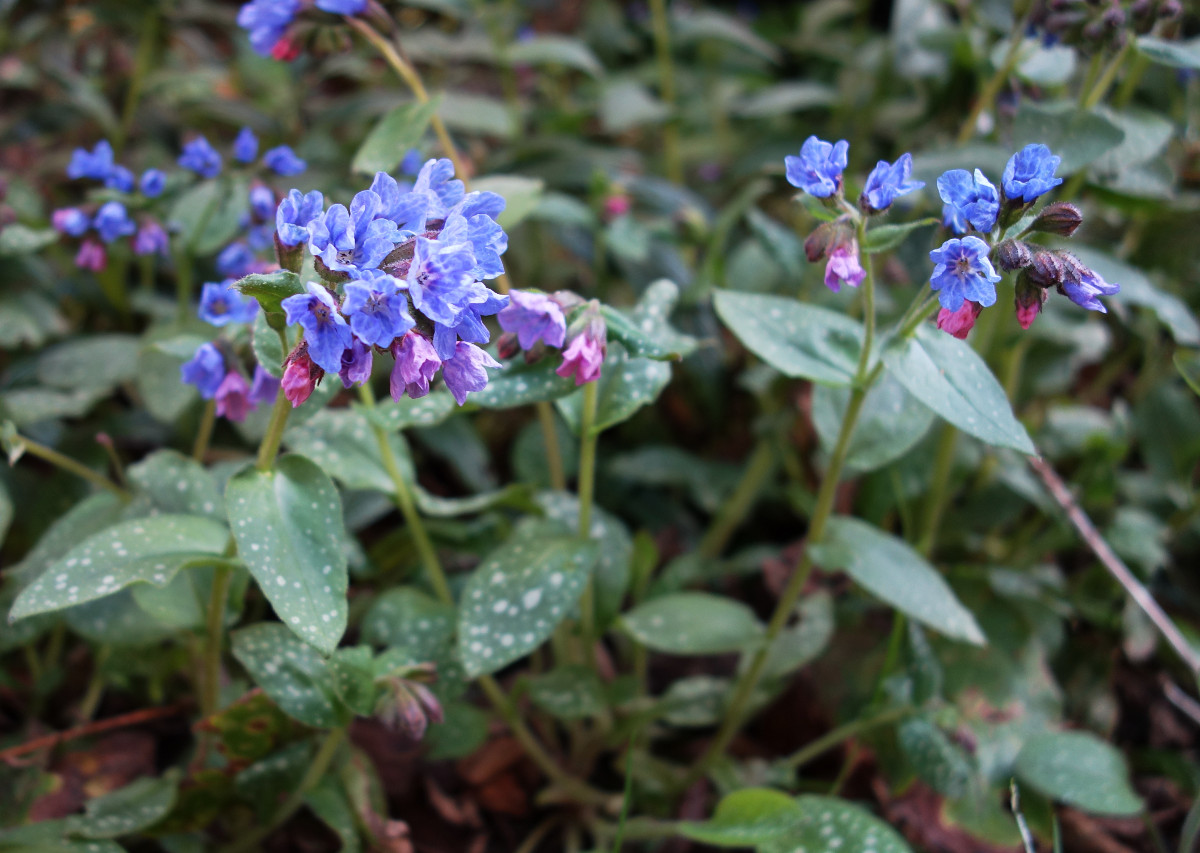Benutzer-Werkzeuge
Pulmonaria officinalis L. - Boraginaceae - lungwort, Jerusalem sage, Echtes Lungenkraut
Perennial herb, up to 30cm high, native to Europe; leaves ovate-cordate, hispid, mostly white-spotted, long petioled; flowers changing color from red to blue as they mature.
The leaves (Pulmonariae herba) were mainly used in folk medicine as expectorant, sometimes in cases of ailments of the gastrointestinal and urinary tract.
„It is interesting to note that the herb was used against lung diseases in former times, because the spotted leaves resemble diseased lungs („doctrine of signatures“)… It has been suggested that Pulmonaria, like other Boraginaceae (See Borago, Symphytum), may contain potentially toxic pyrrolizidine alkaloids. In careful screening of plant material from different localities, no pyrrolizidine alkaloids could be detected.“
[Medicinal Plants of the World. Ben-Erik Van Wyk and Michael Wink, Pretoria 2004, 261]
„In 11 species of the flea beetle genus Longitarsus we investigated whether the insects sequester the pyrrolizidine alkaloids (PAs) present in their host plants of the families Asteraceae and Boraginaceae. In all cases where PAs could be detected in the leaves of the local host plant, they could also be detected in the corresponding beetles. In one host plant, Pulmonaria officinalis, no PAs could be detected in the leaves, yet were present in the beetles collected from them. We suggest this is due to uptake of PAs during the root-feeding larval stage.“
[Selective sequestration of pyrrolizidine alkaloids from diverse host plants by Longitarsus flea beetles., Dobler, S., Haberer, W., Witte, L., Hartmann, T., Journal of Chemical Ecology, Vol.26(5), 2000, 1281-1298]
Total phenols in herbal tea of P.officinalis were very high at 673 µM QE (quercetin equivalents). Determination of antioxidant properties by the Trolox equivalent assay showed a value 0f 2.02 mM for the tea (with TEAC values of Ilex paraguariensis 3.5, Camellia sinensis black tea 3.9, green tea 5.9).
[Polyphenols and antioxidant capacity of Bulgarian medicinal plants., Ivanova, D., Gerova, D., Chervenkov, T., Yankova, T., Journal of Ethnopharmacology, Vol.96(1), 2005, 145-150]
P.officinalis contains 13-15% mineral substances, therof silicic acid up to 2.5%; catecholtannins up to 4%, gallotannins up to 2%; flavonoids (O-glycosides of kaempferol and quercetin); and mucilage forming fructanes and polysaccharides.
[Hagers Handbuch der Pharmazeutischen Praxis, Springer 2010]

Auerswald, B.A., Roßmäßler, E.A., Botanische Unterhaltungen zum Verständniß der heimathlichen Flora, p.38, t.6 (1858)
http://plantgenera.org/species.php?id_species=854403

Pulmonaria officinalis, CC BY-SA 3.0, Author: Andreas Kraska
